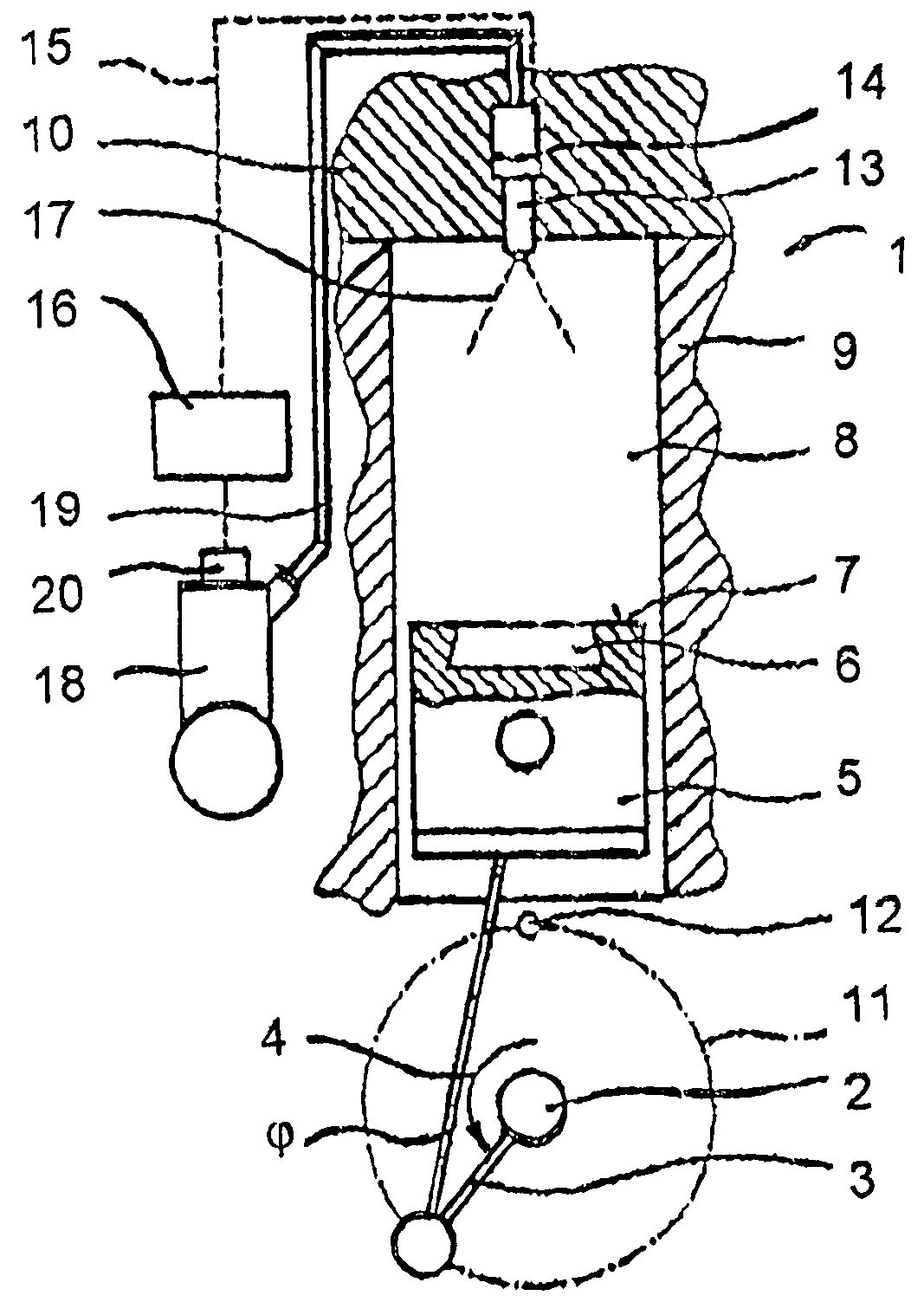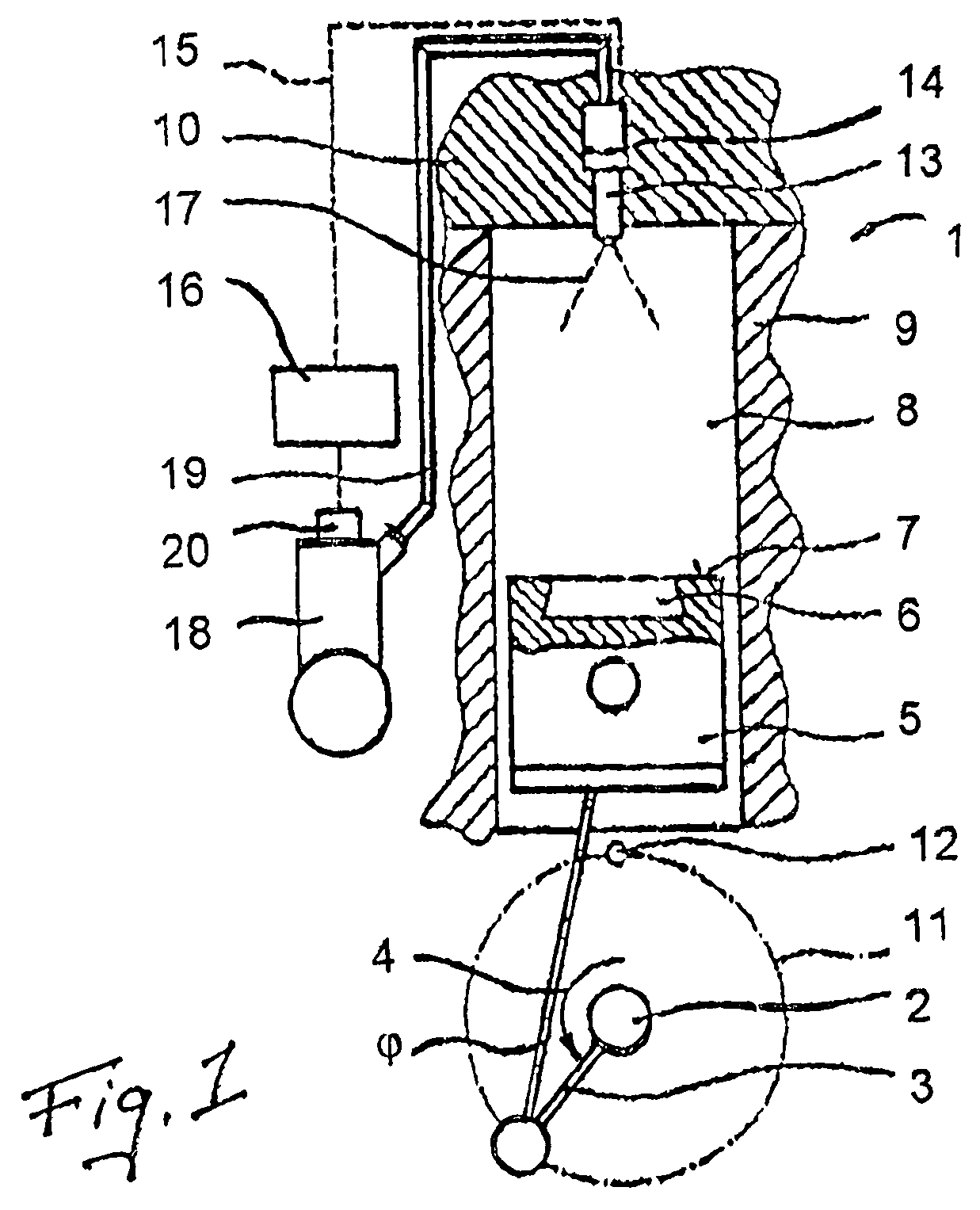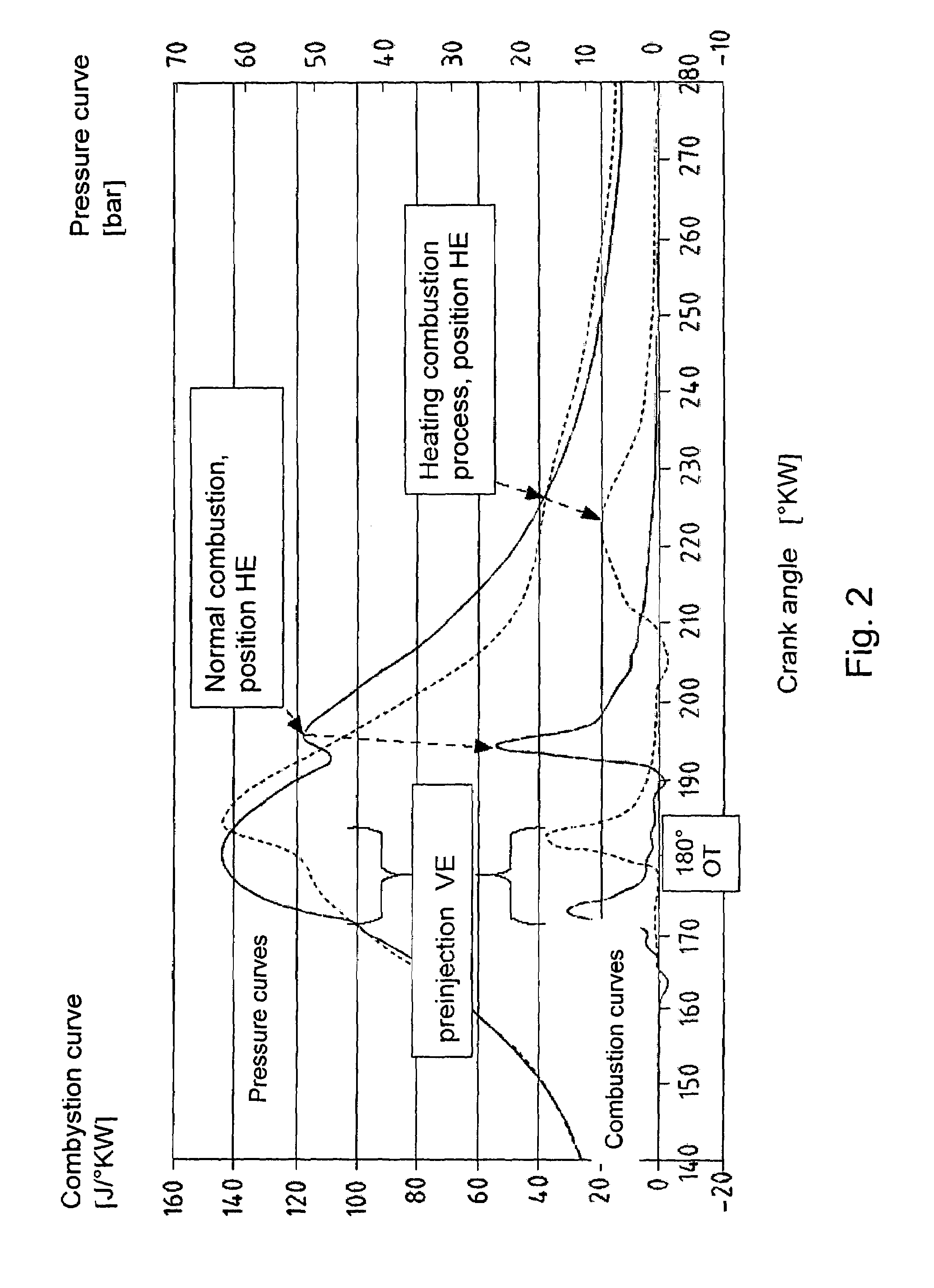Method of operating an internal combustion engine in an engine warm-up phase
a technology of internal combustion engine and engine heat, which is applied in the direction of electrical control, process and machine control, instruments, etc., can solve the problems of poor heating capability, inability to compensate the lack of heating heat otherwise, and inability to achieve the effect of heating heat release, optimized introduction of heat into the coolant circuit, and high heat releas
- Summary
- Abstract
- Description
- Claims
- Application Information
AI Technical Summary
Benefits of technology
Problems solved by technology
Method used
Image
Examples
Embodiment Construction
[0023]FIG. 1 shows an internal combustion engine 1 in which a crankshaft 2 is driven via a connecting rod 4 by a piston 5 which is guided in a cylinder 9. Formed in the cylinder 9 between the piston 5 and a cylinder head 10 is a combustion chamber 8 which preferably comprises a recess 6 which is formed in the piston base 7. The piston rod 4 is connected to a crank 3 of the crankshaft 2 which, as it rotates clockwise on a crank circle 11, the combustion chamber 8 is reduced in size, with the air enclosed therein being compressed. The charge exchange in the combustion chamber 8 takes place by means of gas exchange valves (not illustrated) and gas ducts (not illustrated) in the cylinder head 10. When the crank 3 reaches a top dead center 12, also referred to as TDC, the end of the compression is reached, at which point the combustion chamber 8 has the smallest volume and the highest compression pressure and also the highest compression temperature. The momentary position of the piston ...
PUM
 Login to View More
Login to View More Abstract
Description
Claims
Application Information
 Login to View More
Login to View More - R&D
- Intellectual Property
- Life Sciences
- Materials
- Tech Scout
- Unparalleled Data Quality
- Higher Quality Content
- 60% Fewer Hallucinations
Browse by: Latest US Patents, China's latest patents, Technical Efficacy Thesaurus, Application Domain, Technology Topic, Popular Technical Reports.
© 2025 PatSnap. All rights reserved.Legal|Privacy policy|Modern Slavery Act Transparency Statement|Sitemap|About US| Contact US: help@patsnap.com



